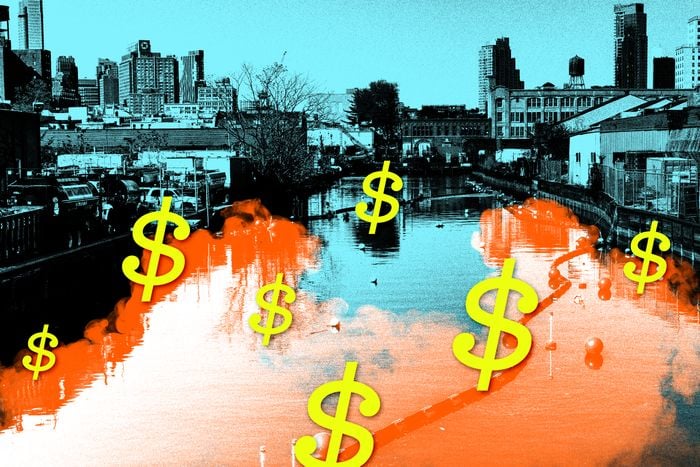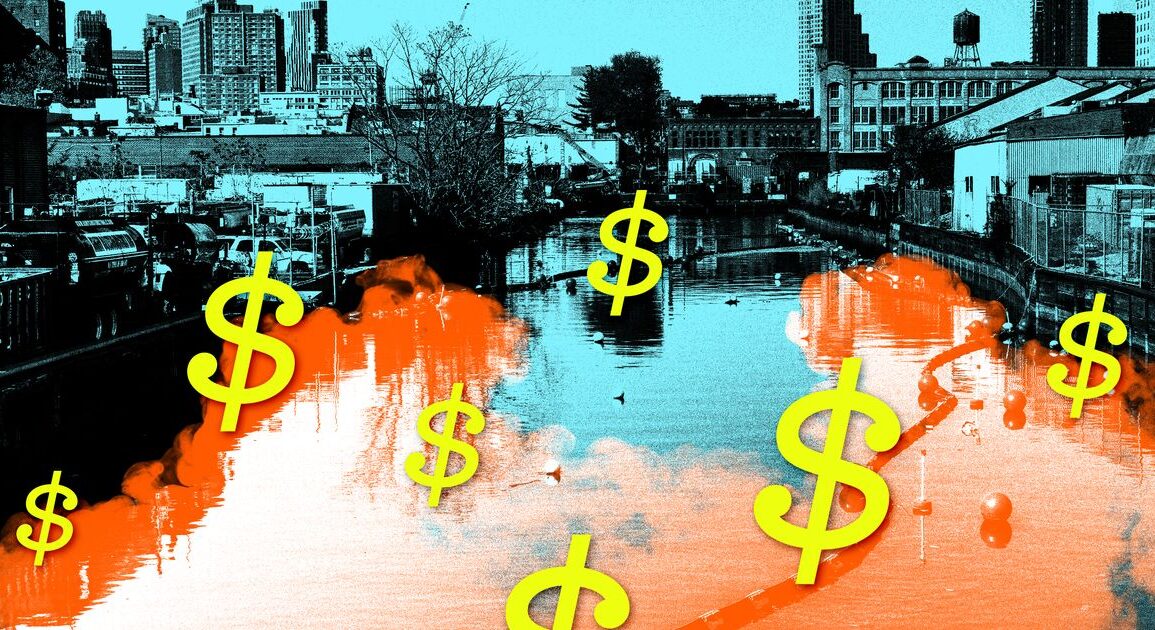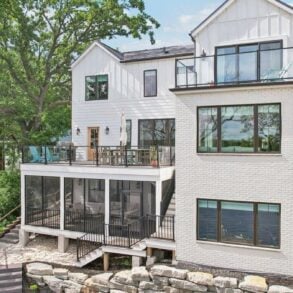
Photo-Illustration: Curbed; Photos: Getty
For nearly a year now, the Department of Environmental Conservation has been quietly investigating 100 blocks in Gowanus for the presence of cancer-causing fumes, a response to the high concentrations of trichloroethylene vapors, 10,000 times over the allowable amount determined by the New York State health department, that were discovered a few years ago at the Royal Palms Shuffleboard Club at 514 Union Street. Similar tests conducted last year showed dangerously high levels of the vapor, the remnants of an industrial solvent that collects in the soil and groundwater and enters buildings through the foundation, at 543 Union, which is home to nearly two dozen different businesses. The findings, to say the least, are unnerving.
And yet this rolling pattern of toxic discovery has done little to dampen the luxury market, according to brokers who work in the neighborhood. “I am shocked by how little the Superfund comes up in Gowanus,” says Ron Krasnow, an agent with MySpace NYC, which is currently listing a four-bedroom duplex on Union Street for $5,500 a month. “I’m usually the one who brings it up, when people start talking about gardening — this is soil you can’t plant anything in if you want to eat it.” The EPA finalized a clean-up plan for the canal more than a decade ago and barges began carrying toxic sludge out in 2020, but the neighborhood is still, apparently, filled with hazardous pollutants.
Matthew Bank, an associate broker at Bank Neary, who has several listings in a renovated townhouse on 15th Street, says that “Interest in that neighborhood just seems to be going up and up and up.” A floor-through apartment with a terrace in the building is currently asking $7,635 a month. (It’s no fee, with a free month thrown in that brings it down to $7,000 a month. Still.) It’s not the Superfund designation that makes the area a bit of a real-estate puzzle, he says, it’s the pricing — there’s so little luxury inventory to use as comps because most of it is still under construction.
For years, people have been raising eyebrows at the notion of luxury development along the Gowanus Canal, which was declared a Superfund site in 2010. (A few years ago, there was much snickering at a new rental development that promoted kayaking on the canal, touting the area as “the Venice of Brooklyn.”) But the former industrial area’s glow up was already well underway by the time the City Council, in 2021, approved a rezoning that allowed for the construction of 8,000 more apartments. Since the rezoning, Gowanus has become a maze of construction fencing with new projects seemingly breaking ground every week. It’s a dissonant little neighborhood, maybe a harbinger of the city’s increasingly dissonant future: a rising mix of green luxury and desperately needed affordable housing alongside silent toxins emanating from the ground. The Whole Foods on 3rd Street, a four-minute bike ride from the buildings found to be most toxic in recent tests, has a rooftop solar farm and a parking lot routinely packed with Teslas.
Another broker gave the equivalent of a shrug when I asked him if he thought potentially widespread toxic vapors rising from the soil might dissuade people from moving there. “No one has brought it up to me,” he says. “They build everywhere in New York, and the market dictates the prices.” Certainly, he added, other types of air pollution — a lot of it from traffic — didn’t seem to be a deterrent to luxury development. Just look at Fourth Avenue. Or Dumbo.
After all, brokers pointed out, industrial pollution in Gowanus isn’t exactly shocking; it’s more or less what the neighborhood is known for. And much of New York is built atop industrial pollution that was never properly remediated — Stuy Town, for example, sits on the site of a huge manufactured gas plant, which left behind toxic coal tar. Gowanus also had a number of manufactured gas plants, including one at the planned site of Gowanus Green, an affordable housing complex with a school. The city is filled with so much lead that kids in multiple neighborhoods test high for it at double the rate of kids in Flint, Michigan. Add all those considerations to the high costs of housing and it can feel like you kind of can’t live anywhere in the city.
But so far, at least, rental and sales prices in Gowanus have remained mostly in line with the rest of the city, according to data from StreetEasy. Between January and May of this year, 11.8 percent of all sales listings had price cuts, compared to 10.5 percent citywide. Rental concessions have been twice as high as the rest of the city — 26.4 vs. 12.6 percent — but Kenny Lee, a StreetEasy economist, attributed larger sales and rental discounts to the fact that Gowanus has a lot of higher-priced inventory, which has seen deeper cuts across the city. “The more expensive segment of the market is seeing slower demand,” he wrote in an email. “Gowanus might be seeing a slightly faster pace of price cuts compared to the rest of the city due to sellers adjusting to more modest demand for expensive homes.” In other words, it’s not really a pollution discount, per Lee. It’s just a high-end slump.
But Gowanus’s redevelopment, as well as current and future residents’ comfort level with living there, has always been built on the promise that the pollution doesn’t, or at least won’t, pose a threat. “We are finally really at a point where we can clean up the canal, we can bring open space, we can bring open space, we can bring 3,000 units of affordable housing,” Vicki Been, then the deputy mayor for housing and economic development, told the New York Times in 2021. As one broker put it: “People think if they’re building all this stuff here, it must be safe.”
And what of the people already living there? Voice of Gowanus, a local advocacy group, has been pushing for a full clean-up of brownfield sites, properties that are contaminated by former industrial use, in compliance with state law. (Developers have to clean up sites before they build, but what constitutes adequate remediation is a matter of considerable debate.) Walter Hang, the founder of Toxics Targeting, an environmental data firm hired by Voice of Gowanus to help expose the toxic vapor issues, says they also want to see mandatory testing at potential brownfield sites, arguing that residents — and future tenants paying upward of $6,500 for in-unit laundry with a view of the canal — deserve a full accounting of the neighborhood profile.
This may be an uphill battle without a change to the law. As the New York Post has reported, of the 626 sites the DEC targeted for toxic vapor testing, so far only about 100 property owners have provided access (17 of which were found to have unsafe air). While there are tax credits and liability protection for property owners who voluntarily participate in New York’s brownfield clean-up program, there are also huge potential drawbacks to having to disclose pollution to future tenants and buyers. Hang says he’s been inundated with calls since the news of widespread toxic vapor contamination broke. Potential luxury residents might not care about pollution, but the people already living in Gowanus do. “People are terrified that they and their children live so close to these sites,” he says. Even some brokers are taken aback by the lack of concern among incoming residents. “When Gowanus popped as a neighborhood ten years ago, I was surprised by the prices it was getting,” one says. “It paces along with the nicest parts of Park Slope. I’m still flummoxed.”
This post was originally published on this site be sure to check out more of their content.







